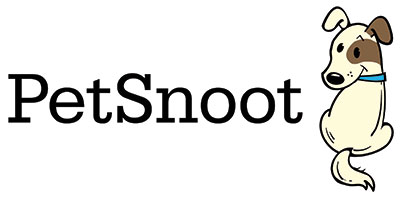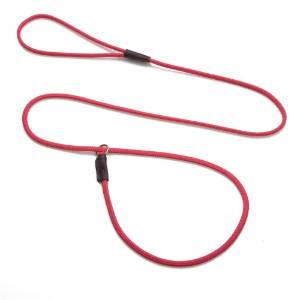Are you sick and tired of cleaning up after your puppy? Worried that your new pet may be untrainable? If you feel hopeless, and your patience is wearing thin, you are not alone. You are now part of a large group of pet owners that are all questioning their sanity at this very moment.
The housetraining phase of puppydom requires dedication, consistency and a whole lotta patience! With some effort on your part, it is entirely possible for your puppy to be 100% housetrained.
Step #1: Get everyone in your household involved.
To increase your housetraining success rate, make sure you include all family members in your training protocol. Every member of your household must be on the same page! The key to training a puppy anything is consistency.
Step #2: Designate a specific potty area/routine.
Determine which door and a specific spot in the yard that you would like to train your puppy to do his/her business. You will be using the same door and taking him to the same spot in the yard EVERY SINGLE TIME.
Step #3: Be prepared by keeping the following materials handy.
- Paper towels
- Enzymatic carpet cleaner (more specifics on this type of cleaner later)
- Treats
- A leash and collar (leave a leash and collar by the designated potty door.) I recommend a slip leash for easy exits -pictured here.
Step #4: Celebrate when your puppy does things your way!
This is the fun part! Take your puppy out the potty door, walk them to their designated potty spot and ask them to go potty. Yes, you will need to tell your pup in a pleasant and calm voice to “go potty” or whatever phrase your family comes up with. Be sure to repeat the phrase until your puppy actually does the dirty. Here is the important part! AS SOON AS your puppy does the dirty, the potty party begins. A proper potty party consists of words of praise, a food reward, and lots of positive attention. “Good puppy!” “Good go potty!!!”
Step #5: Be aware of the second act. Why does my puppy go outside, then immediately come in and pee?
As soon as you bring your puppy back in the house be on high alert. Many times a puppy will go outside, but they are not relaxed enough to express their entire bladder. These tricky pee monsters will fool you into thinking they did their business and come back inside to immediately urinate on the floor. If this is happening to you, I recommend bringing them in for a quick second and then taking them right back out. It may take some time for them to squeeze it all out, so plan to add a bit more time in your schedule for these potty sessions.
Also, if your puppy is excited to see you and their adrenaline is pumping, they may not relax enough to completely express their bladder. Once they come inside and settle down, they will then finish what they started right there in your living room.
Step #6: What do I do when I catch my puppy in the act of pottying in the house?
When you catch your puppy making a pee or poo inside, immediately scoop them up and startle them with a stern NO. Take them outside to their potty spot and follow your lessons listed above.
NEVER rub their nose in it, spank them or go on a yelling rampage. Releasing your anger in this way might make your feel better, but teaches your puppy absolutely nothing. Acting this way creates confusion, destroys trust and makes you look like an out of control bully. Remember it is up to you to be watching your puppy at all times. If you are distracted by housework, tv, etc try putting your puppy in their crate until you can pay more attention.
MORE PATIENCE! YOU GOT THIS!
Step #7: Accidents will happen…cleaning up the mess.
I recommend an enzymatic cleaner such as Equalizer Spray. This spray can be found on Amazon, and many online pet pharmacies, and averages around $20 for a 20 oz can. You can read a review on this product here.
It is important to clean up the soiled area as best you can, eliminating any smells that may trigger your puppy to return to that particular spot.
Step #8: Provide appropriate amount of food and water.
A feeding schedule of 2-3 meals a day is ideal. FRESH water should always be available when you are home. If you are keeping your puppy in a crate while you are away, do not put food and water inside the crate.
Keep food available for 20-30 minutes at a time. This will help your puppy understand a feeding schedule and helps you know if/when your puppy is eating. If they don’t eat after 30 minutes, put the food bowl up until next scheduled feeding time. NO this is not mean. Your puppy will not starve itself, and with consistency on your part they will adapt to your feeding schedule.
The last meal of the day should be 3 hours before bedtime. Pick up water bowls an hour before bedtime.
Step #9: Know when your puppy will feel the urge to go. Many times puppies will give you telling cues when they are about to pee or poop.
Signs that a potty break is imminent include: restlessness, sniffing, a sudden romp to the corner of another room, and circling (the last one requires quick action on your part). These are your telling cues that it is time to go outside sooner rather than later.
Many regular activities such as eating, drinking, playing, and waking from a nap, are a stimulus for potty time and the perfect opportunity for you to put your house training lessons into play.
Step #10: How long does it typically take to completely house train a puppy?
Many people ask how long will it take for my puppy to be completely house trained or want to know how old their puppy will be when they master this skill. The answer lies in your efforts. Never give up and be consistent! It will happen. Some puppies pick up on it in a couple of months or less, while others require more extended training. But no matter what, using the lessons outlined here, any puppy is trainable.
I remember feeling like I was at my breaking point with my puppy, when all of a sudden something just clicked. He stopped having accidents in the house, and seemed to know what I was asking of him. Just when I felt like giving up!
Stay positive! This is a trying time and many pet owners do give up and return their puppy. Be that pet owner that follows through with their commitment and reaps the many benefits of living in harmony with their housetrained pet some day!
Comment below and share how your house training efforts are coming along.



Recent Blog Comments